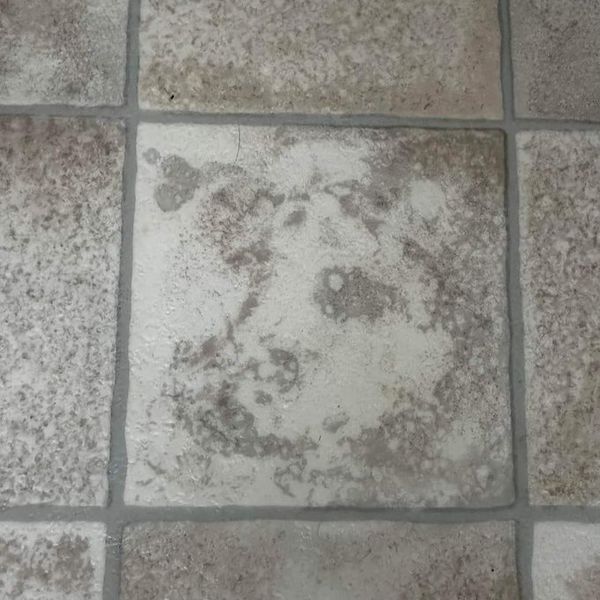Have you ever caught yourself seeing faces in random objects? It’s a fascinating phenomenon called pareidolia. Our brains have a remarkable ability to interpret shapes, patterns, and even sounds as something meaningful – often as faces. This is why we might spot animals in fluffy clouds or faces in rugged rocks. Surprisingly, even a worn tile floor can reveal a faint face upon closer inspection.

What is Pareidolia?
Pareidolia is a psychological and visual perception where our brains recognize familiar patterns, especially faces, in random things. This ability stems from our primal need to identify friends, foes, and others. Our brains are hardwired to detect faces, even when they don’t actually exist.
The Tile Face: A Closer Look
Upon closer examination of the image, you’ll notice that the rough texture of the tile forms a face with eyes, a nose, and a mouth. The “eyes” may appear as darker spots, the “nose” as a smudge, and the “mouth” as a faint curve. It’s like the tile has transformed into a hidden character, patiently waiting to be noticed. This captivating instance of pareidolia turns an ordinary tile into something mysterious and artistic, evoking a sense of wonder and perhaps even a touch of eeriness.
Why Do We See Faces?
Seeing faces in objects is more common than you might think. It’s a product of our brain’s evolution, helping us quickly identify faces to establish social connections and ensure survival. Detecting allies and recognizing threats was vital for early humans. Consequently, our brains have become highly skilled at perceiving even the slightest facial cues, sometimes even over-exaggerating them.
Scientists believe that this ability to see faces has influenced our emotional understanding, social interactions, and even our artistic pursuits. It showcases the remarkable power of our brains to find meaning, even when that meaning exists solely in our minds.
The Artistic Side of Pareidolia
Pareidolia is not just a scientific curiosity; it also holds an artistic charm. Artists have long drawn inspiration from hidden images in the world around us. This form of art encourages us to look beyond the obvious and discover beauty in the unexpected.
The tile face captured in the image can be viewed as a natural work of art – a masterpiece shaped by time, wear, and our imagination. It serves as a gentle reminder that art can be found anywhere if we take a moment to truly see it.
Conclusion
Next time you encounter a tiled floor, gaze at the sky filled with clouds, or examine a textured wall, take a moment to observe closely. You might just find a friendly face staring back at you. Pareidolia reminds us of how our brains interpret the world around us and how there is wonder to be found in the ordinary. These moments of recognition serve as small reminders of the magic hidden in everyday life. So, keep your eyes open and embrace the joy of discovering hidden faces in unexpected places.